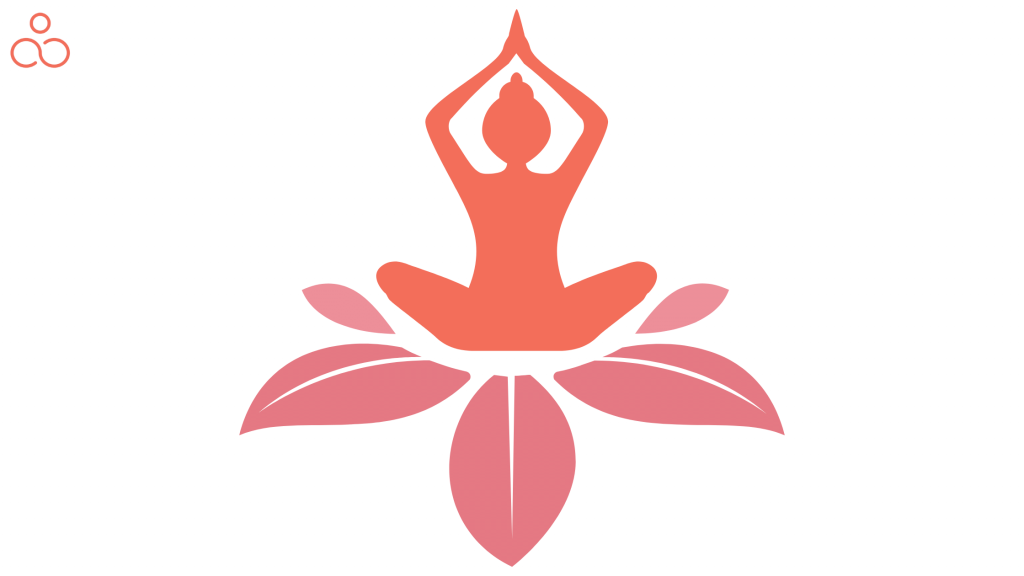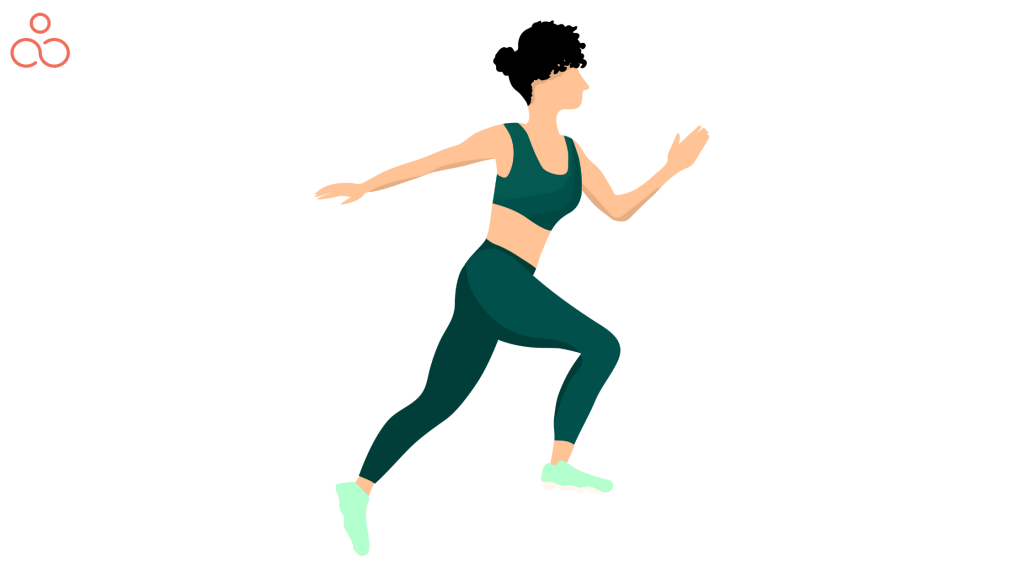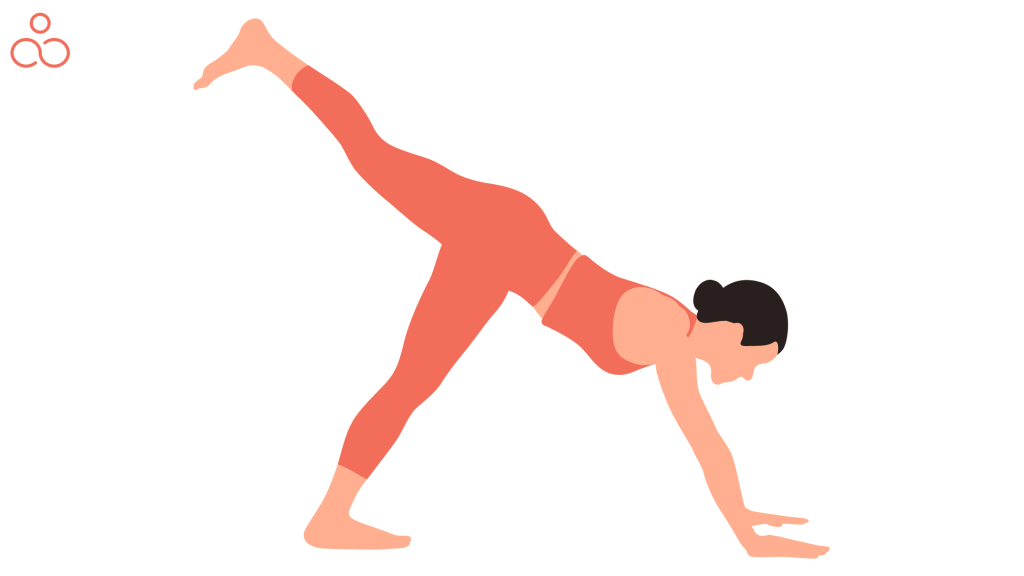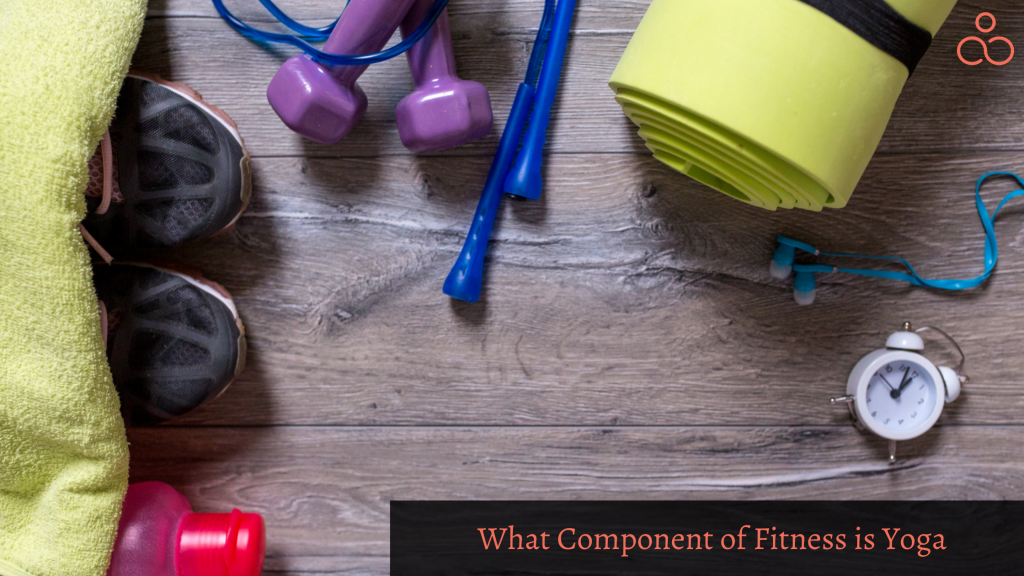I’m not sure about you, but I’m not always in the mood to work out. It sometimes seems forced and like a hassle. But I’ve discovered that seeing fitness from a specific lens is beneficial. It was important for me to get rid of my connection to gym class and discover an activity I genuinely love, that spun to be yoga. If you’re wondering if yoga counts as exercise, I would say “Definitely”! Then to understand what component of fitness is yoga, jump in and read through the sections below. The fact that it can fit numerous components, depending on the kind of class, is a win in my book!
YOGA – Its Origin and Evolution

Yoga wasn’t always a means to work out. It is a long-standing ideology with at least 3,000 years of history (maybe more). Vedic priests first instructed royal academics in the art of leading a healthy and full life. The lessons from the scriptures explained how to have a bright life and develop a closer relationship with God.
It took many centuries for what we now refer to as “yoga” to develop into physical activity. Yoga evolved from being an intellectual learning process to one that involved the whole body. A more thorough approach to embracing the idea of yoga was presented through breathing techniques and physical motions.
Yoga featured postures and motions that suited the fitness scene at this time, making it a popular form of exercise. Yoga was viewed as a warm-up exercise that was popular among fitness enthusiasts. Yoga sessions are still offered in gyms and fitness clubs today. Although they come in a variety of shapes and styles, the fundamental ideas from the early yoga classes have not changed.
You could start a yoga practice for a variety of reasons. Many people are aware that yoga may help you live more mindfully, reduce stress, and clear your mind. It can also help you develop your spiritual practice. But can yoga be done mostly for physical fitness?
Undoubtedly, yes. Yoga is a useful technique that includes elements of fitness in its extensive list of advantages.
Elements of Fitness

Fitness is a term that often reminds us of intense activities such as running or swimming. I personally can associate fitness with images of ripped males competing at the gym to see who can lift the most weight or well-toned females flaunting their flat belly. Do you share my perspective?
Yes, they are fitness mediums but they are not the only ones. A wide variety of bodily activities are included in being fit. It may entail sex as well as dancing, stretching, pushups, and strolling, among many other things.
I discovered that the objective is to include a variety of fitness-related elements into your life rather than focusing on the sort of activity you perform. Physical activity guidelines for Americans, 2nd edition, by the Department of Health and Human Services, placed a strong emphasis on muscle-strengthening exercise and moderate to vigorous aerobics as the key components.
It can then be dissected even further. Physical fitness components are listed by the American College of Sports Medicine (ACSM) in the fifth edition of its Health-Related Physical Fitness Manual:
- Cardiovascular endurance
- Muscular strength building
- Muscular endurance
- Flexibility
- Balance
- Power
- Body composition
Cardiovascular Endurance: This is connected to cardiovascular activity in workout routines when you breathe more quickly and your heart rate rises. The phrase suggests that to maintain physical activity, the heart must pump more oxygenated blood to and from it. More energy is produced in the body as a result of this. Cardiovascular fitness may be achieved by running on a treadmill or playing basketball.
Muscular Strength Building: Muscular strength is, by definition, how much force a muscle can generate with one complete effort. Muscle strength can be shown, for instance, by performing a solitary barbell bench press at a given weight in the gym.
The ability to pull oneself from a chair, pick up a box off the floor, or run down the block to catch the bus will all benefit from having strong muscles. Limitations in muscular strength also affect a few of your basic biological systems, slow down your metabolism and affect posture.
The ratio of your body’s lean muscle mass to body fat may be determined by looking at your body composition. This is a useful tool for determining your fitness status. The mass index (BMI) serves as a measure of your degree of fitness.
Muscular Endurance: The capacity to maintain a regular and predictable repetition of movements over a prolonged period is referred to as endurance and is associated with developing physical strength. A marathon runner who prepares in a way to withstand the 26.2-mile run is an excellent example. Their cardiovascular system and leg muscles must have the endurance for this.
Flexibility: This describes the motion range in a group of joints and tissues during exercise, enabling your body to rotate and stretch in a variety of ways. You are less likely to be able to move fully functionally when your muscles are tense.
Balance: The capacity to regulate your body when it is stationary or moving while engaging in physical activity or exercising is known as balance. It combines several synchronized talents that operate at the same time. The capability to maintain static equilibrium, or the capacity to sustain a steady position, denotes the capacity to keep one’s body strong, stable, and centered. Being able to maintain a particular posture while moving is known as dynamic balance. Skiing, running or walking all require this, thus it is important.
Power: Lifting weights at the gym is one way to develop physical strength. It has a special caveat yet is connected to strength. In the gym, the capacity to apply a given degree of force before encountering resistance is referred to as strength. In contrast, having power means being able to use that force as quickly as possible. One grows stronger by definition as one trains for the ability to overcome that opposition. These physical fitness elements are important for most sports, other physical pursuits, and even yoga.
Yoga may integrate the majority or all of these fitness elements, but I know that many people don’t take it seriously as a valid type of exercise. So, let me explain the fitness components of yoga.
Fitness Components in Yoga

Cardiovascular Endurance: Yoga does integrate cardiovascular endurance, even if you might not increase your heart rate as much as you might in an aerobics class or when using an elliptical machine. Your cardiovascular system benefits from yoga classes since there is a lot of emphasis on breathing. As you transition from posture to pose in Hatha Yoga, a kind of yoga that often combines movement and breath, the tutor will frequently give you “breath cues.” A yoga instructor could instruct students to fold forward or lift their arms above their heads while inhaling.
Your body’s equilibrium is maintained by moving and breathing repetitively. Additionally, it promotes healthy blood and oxygen circulation throughout your body, which gives you the energy you need to move your body and activate your muscles effectively during the yoga session.
Muscular Strength Building: You use your body weight to develop physical strength when doing yoga. This primarily occurs when you maintain active postures during class. To properly hold your body and maintain the posture in specific circumstances, you may need to contract your muscles. This is evident in a difficult yoga position like Handstand, but you will also activate your muscles and get stronger in less simple poses. Yoga postures like Warrior 2 Pose are an excellent way to strengthen the muscles in your legs. Your feet should be spread wide as you lunge in this manner. The rear leg is straight, while the front leg is 90 degrees bent.
The quadriceps, hamstrings, and calves are stimulated by the front foot’s solid contact with the yoga mat. It activates the outside section of the thigh muscles and hips since the rear foot is firmly planted on the mat. By maintaining this position for a while, you are teaching your muscles to develop the necessary stability, strength, and balance.
Muscular Endurance: Some yoga techniques, such as Vinyasa Yoga, include the body moving steadily and consistently from stance to pose. For instance, this lengthy yoga routine has several vigorous yoga poses. You develop muscular endurance as you perform these exercises more often so that you can maintain the repeating movements and transitions seen in the Vinyasa Yoga flow.
Flexibility: Knowing that they will get more flexible is one of the reasons individuals opt to practice yoga. That’s accurate. When you perform specific yoga poses, you promote muscular flexion, increasing your muscles’ flexibility.
To do this, hold positions like the Seated Forward Fold, for instance, to widen your hamstrings’ range of motion. Your joints move more as a result of the increased movement required to enter and exit yoga positions. More fluid bodily movement and even better posture are the results.
Balance: Balance is a result of yoga practice. In addition to standing solely on a single foot or supporting your body in a certain stance, the balance may also refer to a sense of calmness, awareness, and attention. For instance, in Tree Pose, maintaining the posture requires more than just the capacity of the muscles and skeleton. Your focus and concentration are frequently directed ahead, and you maintain a consciousness that you are in the present moment while you are in balance. You should feel rooted and planted on the standing limb.
In most yoga sessions, one also has the opportunity to practice and perfect both static and dynamic balance. There are certain positions that you must maintain. Holding the yoga pose requires some concentration, stability, muscular endurance, and strength. It takes a certain level of synchronized dynamic balance as you transition from one posture to the next so that your body can enter the following stance elegantly.
Power: Performing various yoga positions requires a certain amount of strength. Power in yoga is the capacity to apply a significant amount of force during a brief period, much like in other physical activities. In a yoga session, even though you are not lifting weights, you are still using your body weight to propel yourself into some dynamic positions. It takes a certain amount of strength and effort to push yourself up into a handstand. Another excellent illustration of the need of having strong arms is while transitioning from Chaturanga Dandasana (Four-Limbed Staff Posture) into Upward-Facing Dog. This well-known yoga pose requires you to propel yourself upward with dynamic energy. You may gain the strength necessary to carry out various yoga positions with success with regular practice.
Yoga will undoubtedly help you become more physically fit overall if you’ve been wondering if it was possible. Yoga contains all the elements of fitness to guarantee advancement toward a sound body and mind. To continue on your journey to physical health, go to your neighborhood yoga class.
FAQS
What kind of physical exercise is yoga?
Yoga is a traditional form of exercise that emphasizes breathing, strength, and flexibility to enhance both physical and mental wellbeing. People of different ages and capacities engage in it. The two key elements of yoga are exercises like postures (a series of motions intended to increase strength and flexibility) and breathing.
Does yoga need physical stamina?
Your entire body gains muscular tone via yoga, and it achieves this in a way that is in balance with the remainder of your body. Yoga increases muscular strength since it demands you to hold each pose for a long period and then repeat it repeatedly.
What aspect of fitness does yoga most significantly improve?
1. Yoga increases your flexibility, balance, and strength.
2. Retaining a position can help the body gain strength and stamina while slow movements and deep breathing improve blood flow and warm up muscles.
Yoga: Is it anaerobic or aerobic?
Yoga may be considered an anaerobic or aerobic exercise. Many specialists believe that yoga is an anaerobic activity. It does not count as an aerobic exercise in the same way as, for example, walking, running, biking, or using an elliptical machine does.
What elements makeup fitness?
Five elements make up total fitness, and they are as follows:
The capacity to maintain flexibility, body composition, muscular strength, and cardiovascular endurance.
Does yoga include any resistance?
Most people agree that lifting weights is the best exercise for building muscle. Many people aren’t sure if it may also be categorized as a strength training exercise, though. In actuality, the answer is yes. Yoga may or may not be referred to as a strength training practice, depending on the style you are doing and your fitness goals.
Is yoga a form of exercise?
Yes, certain types of yoga, such as Vinyasa yoga, may be regarded as aerobic exercise and, as a consequence, can aid in improving your level of fitness if you practice them for a minimum of three months and at least 45 minutes, three to five times per week.
Does yoga build strength or cardio?
This illustration demonstrates how a dynamic yoga style like Vinyasa Yoga may be utilized to increase strength and burn calories. Yoga may be utilized as both cardio and muscle toning in the same session, which may come as a shock to someone who thought it was solely about sitting and meditating.
What kind of workouts are Pilates and yoga?
Both Pilates and yoga are low-impact exercises that primarily employ the body’s weight as resistance. There are several benefits. Both activities may enhance general health, which may lead to an increase in quality of life.
Why is yoga the finest kind of exercise?
Strengthening and Toning Muscles with yoga practice boosts muscular strength and flexibility while also toning and shaping the body. It becomes easier to burn additional body fat and tone your muscles because of the improved flexibility and relaxation of your body’s tissues. This assists in the treatment of long-term medical issues.
How is yoga beneficial?
Yoga incorporates breathing exercises and meditation to help with mental health development. According to Dr Judith Hanson-Weill, practicing yoga regularly “creates mental clarity and calm; improves physical consciousness; alleviates chronic stress patterns; relaxes and concentrates the mind; and sharpens attention.”
How aerobic is hot yoga?
It is more challenging to achieve the benefits of aerobic activity you would receive from conventional Hatha yoga when compared to what you get when you practice hot yoga, also known as power yoga. The American Council on Exercise claims that such demanding forms of yoga only offer a slight benefit in terms of cardiovascular health.
Can yoga help you lose weight?
“Yoga can boost fat reduction, strengthen muscular endurance, and increase range of motion, all of which lead to a more lean-looking physique,” the author notes. Even the gentlest forms of yoga can be beneficial if you want to increase your flexibility and balance. Many of them also support the growth of physical endurance and strength.
What type of workout is yoga?
Yoga changes the body by improving the immune system’s capacity to fight off infections. Regular yoga practice can strengthen one’s resilience to illness. Yoga may be especially helpful for individuals whose muscles have been damaged by stress. As a result, your body will become substantially stronger and more capable of fending off harmful bacteria and viruses.
Conclusion
I believe I was able to successfully demonstrate how yoga may benefit a person’s overall fitness, including flexibility, cardiorespiratory fitness, a healthy body balance, muscular strength, and muscular endurance. The advantages vary depending on the style of a yoga session, but most of them will at least include some of these elements. Some kinds provide them with all. To receive all the components, I may always mix yoga with other forms of exercise.

